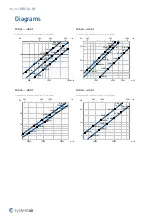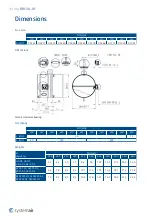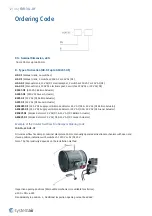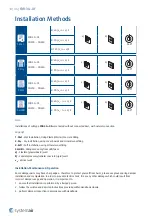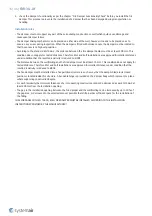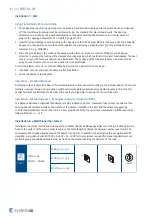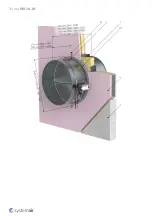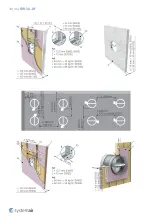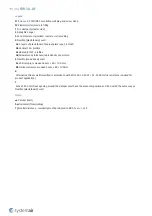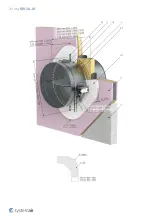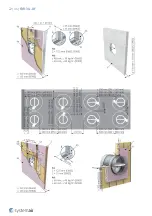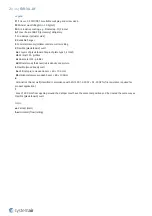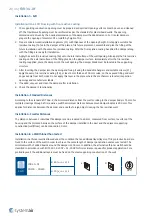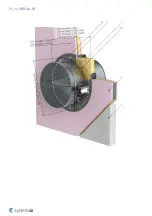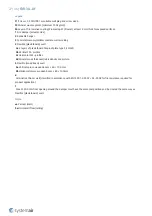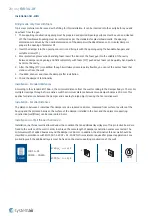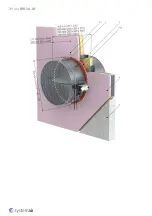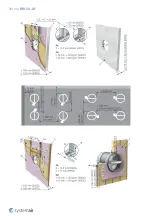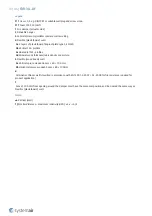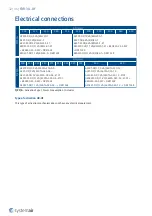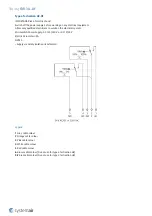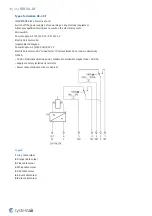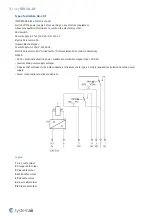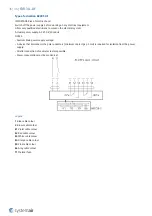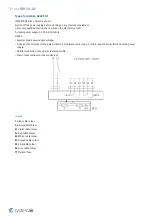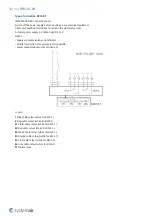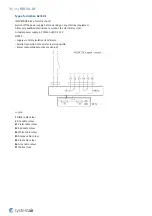
24/46 |
FDR-3G…OF
Installation 3 - Soft
Installation into a Soft Crossing with fire-resistive coating
1. The supporting construction opening must be prepared as depicted. Opening surfaces must be even and cleaned
off. The flexible wall opening must be reinforced as per the standards for plasterboard walls. The opening
dimensions are driven by the nominal dimensions of the damper with added clearance. For circular dampers
prepare the opening of diameter D1 or width by height of D2.
2. Prepare mineral wool installation segments (F5) with thickness of the opening height. First apply a suitable fire
resistive coating (F6) onto the damper at the place of its future placement, assemble and glue the filling of the
future installation with the same fire resistive coating. After the fire resistive coating has dried the damper along
with the filling are ready for installation.
3. Apply the same fire resistive coating (F6) onto the internal surface of the wall opening. Also apply the fire resistive
coating on the external surface of the filling glued on the damper surface. Immediately after the fire resistive
coating is applied, place the damper into the wall opening. The damper blade must be located in the supporting
structure.
4. After inserting the damper into the opening and fixing it using the bendable hangers and suitable screws (F1),
apply the same fire resistive coating (F6), at least 2 mm thick and 100 mm wide, on the exposed filling and wall
edges evenly from both sides. Do not apply this layer in the place where the mechanism is located, inspection
openings and manufacturer labels.
5. If needed, uncover and clean the damper after installation.
6. Check the damper’s functionality
Installation - Standard Distances
According to the standard EN 1366-2, the minimum distance from the wall or ceiling to the damper body is 75 mm. For
multiple crossings through a fire resistive wall the minimum distance between two damper bodies is 200 mm. This
applies for distances between the damper and a nearby foreign object crossing the fire resistive wall.
Installation - Smaller Distances
The distance between 2 individual fire dampers can be reduced to 60 mm, measured from surface to surface of the
housing and the distance between the surface of the damper installed in the duct and the adjacent supporting
construction (wall/floor) can be reduced to 40 mm.
Installation in a Wall thinner than tested
Installation in a thinner wall is allowed under the condition that an additional layer/layers of fire protective board are
fixed to the surface of the wall in order to achieve the same length of damper penetration seal as was tested. The
minimum width of added boards around the damper is 200 mm. In addition, the alternative thinner wall should be
classified in accordance with EN 13501-2:2007 + A1: 2009 for fire resistance required for product application. For a
protruding wall, the additional layers must be fixed on the steel supporting construction of the wall.
3 Soft
FDR-3G...OF
DN200 ... DN630
EI 60 (v
e
i ↔ o) S
a)
b)
360°
EI 90 (v
e
i ↔ o) S
Summary of Contents for A-FDR-3G-OF
Page 1: ...FDR 3G OF Overflow Fire Damper FDR 3G...
Page 13: ...13 46 FDR 3G OF 250 DN 630 Standardardly in position B On demand in position L T...
Page 17: ...17 46 FDR 3G OF...
Page 18: ...18 46 FDR 3G OF...
Page 21: ...21 46 FDR 3G OF...
Page 22: ...22 46 FDR 3G OF...
Page 25: ...25 46 FDR 3G OF...
Page 26: ...26 46 FDR 3G OF...
Page 29: ...29 46 FDR 3G OF...
Page 30: ...30 46 FDR 3G OF...
Page 46: ...Systemair DESIGN 2021 04 27 Handbook_FDR_3G_OF_en GB...

